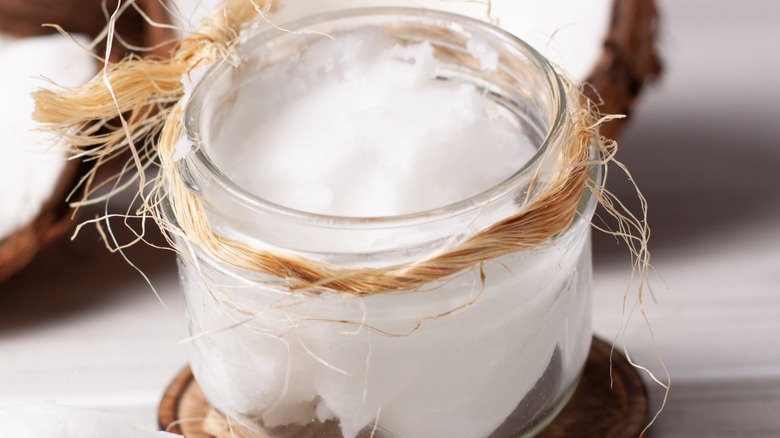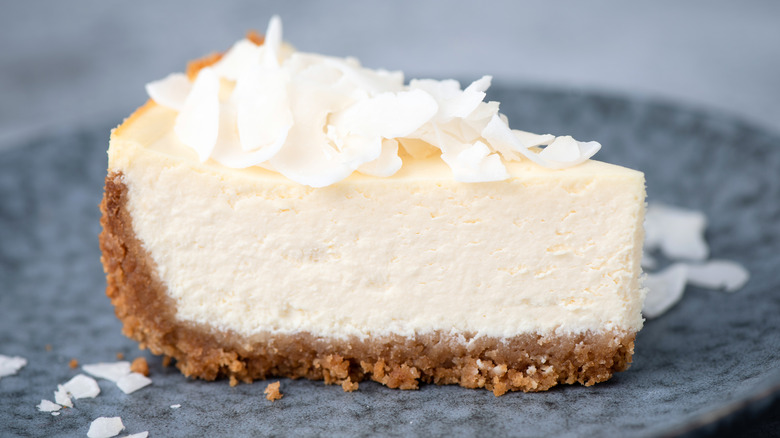When Boiling Coconut Cream, Patience Is A Virtue
Whether you want to make a coconut cream pie or a coconut cream instant pudding, this ingredient is a versatile way to add some non-dairy creaminess to your dishes. Cooking with it, however, can come with a bit of a learning curve. With a rich, thick consistency, coconut cream has more fat than coconut milk and contains coconut "meat," water, and oftentimes guar gum. It therefore runs a few risks: Namely, there's a decent chance of the fat separating on the stove, leading to an undesirable curdled texture.
Luckily, there's one easy trick to keep your coconut cream together. The best advice for cooking with the oftentimes challenging ingredient? Exercising patience, which will keep that fat from separating. As for where this patience comes into play, it's all about how you cook the coconut cream. Rather than crank the stove's heat all the way to high, simply warm your cream gently and slowly.
Sure, this process may take longer, but it'll ultimately keep your coconut cream from reaching a severe boil and subsequently separating. Once you perfect this step, you can then integrate your warm cream into a variety of dishes. With a little patience, you'll have a lot of options. Each takes full advantage of the plant-based cream's unique taste and smooth texture.
Properly heated coconut cream has many culinary uses
Once you home in on the low and slow cooking technique, you can try incorporating coconut cream in a variety of recipes, from the sweet to the savory. In particular, the non-dairy cream makes an ideal base for many different curries and sauces. It's also great in, of course, any and all coconut-flavored desserts. Think classic coconut cream pie, as well as coconut-flavored puddings, cakes, and custards.
Not to mention, coconut cream can flavor whipped cream and panna cotta, adding flavor and texture to a slew of diverse treats. No matter how you use it, the plant-based cream adds thickness and a sweet coconut flavor to anything you put it in. It's therefore a no-brainer to keep a few cans in your pantry. Other tricks for using coconut cream? Make sure to stir the liquid before using it.
Just a few seconds with a spoon can emulsify the ingredients and take care of those separated fats. You can, alternatively, shake your can — that is, so long as you haven't already opened it. With just a little patience, and a few tricks of the trade, coconut cream is easy to cook with it ... and just as easy to add to your favorite recipes.

